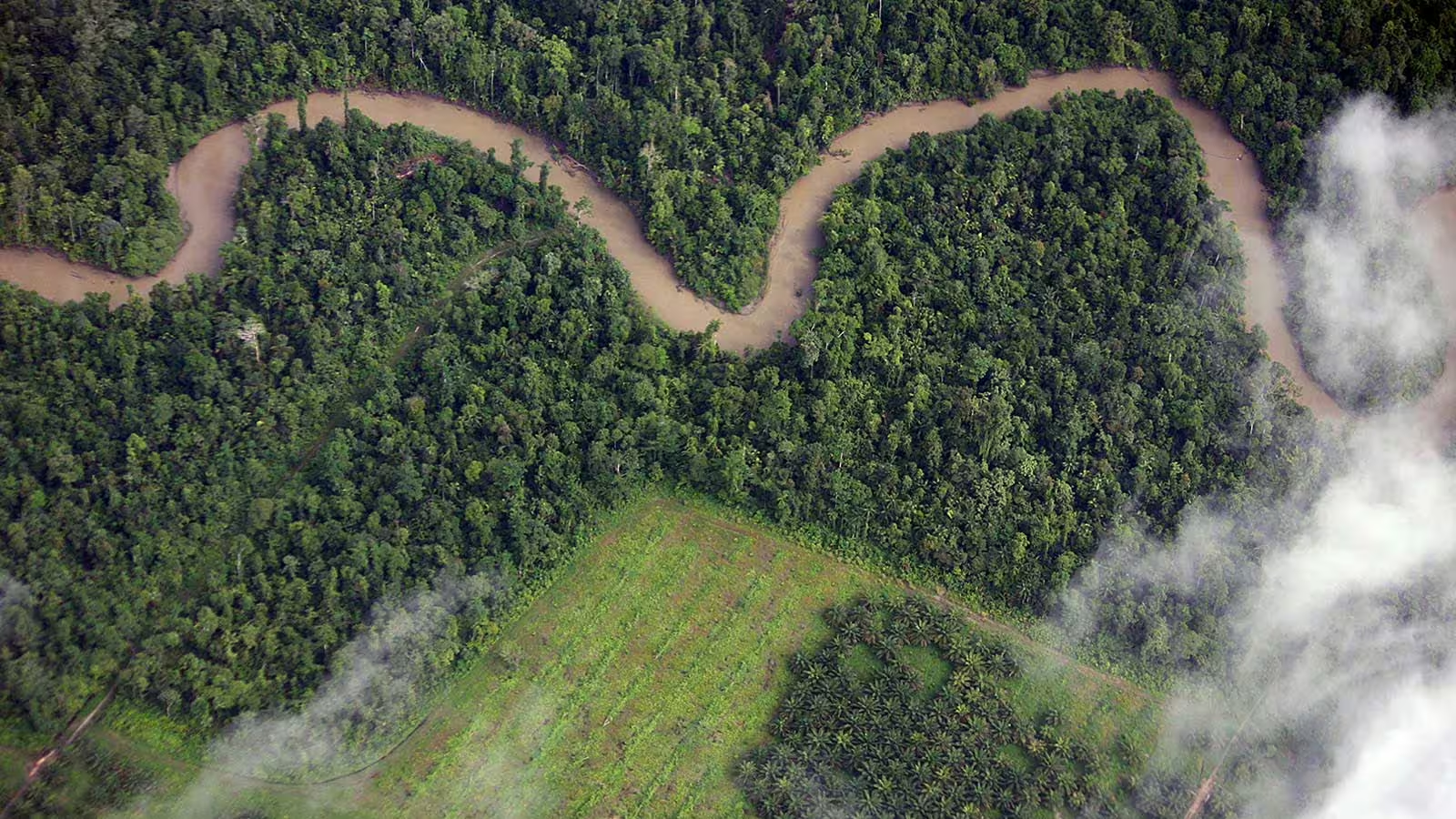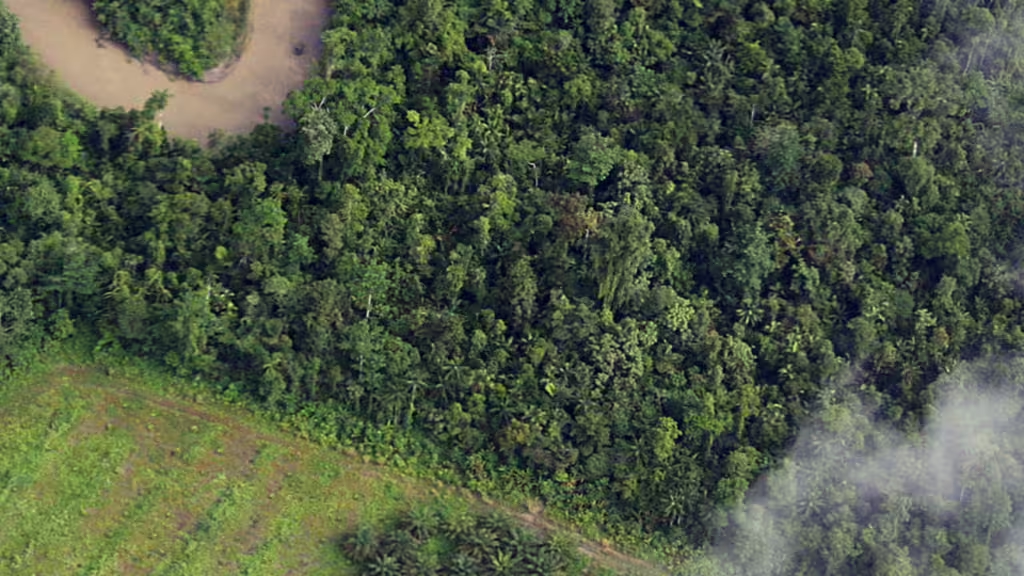Authors
Gretel Gambarelli
My interest in protecting forests began when I was aged 12, when one of my school teachers shared photographs of the deforestation in the Amazon Rainforest, Brazil. As an adult, I was lucky enough to have the opportunity to visit this important ecosystem and witness firsthand the continuing destruction. Forests provide critical services like absorbing CO2, preventing runoff and flooding, maintaining soil nutrients, and fostering biodiversity. Despite these benefits, deforestation is a major driver of emissions in the agriculture, forestry, and land use sectors globally, with wide-ranging impacts across the value chain, including on companies and financial institutions.
Financial institutions face increasing material risks from exposure to companies linked to deforestation, driven by rising investor attention, shifting product demands, and the physical risk of deforestation itself. Additionally, growing sustainability disclosure regulatory requirements, both mandatory and voluntary, as well as emerging due diligence legislation for high-risk commodities, are pushing for specific disclosure on deforestation and the integration of deforestation into climate- and nature-related financial disclosure. Standards are also evolving. For example, the Task Force on Climate-related Financial Disclosures (TCFD) and the Task Force for Nature-related Financial Disclosures (TNFD), which traditionally treated climate and nature risks separately, are beginning to acknowledge their inseparable links, with deforestation sitting at the nexus. These changes highlight the need for financial institutions to act and join the growing number already taking steps to reduce deforestation and disclose their impacts on forests and land use.
Practitioners already have tools and resources available to help minimize financed deforestation and land-use change within their portfolios. Data, guidance, and frameworks exist to assist financial institutions in assessing and disclosing deforestation risks, while also developing effective risk management and due diligence processes. For example, the Deforestation Disclosure Guide for Financial Institutions: Towards Integrated Nature- and Climate-related Financial Disclosure from the Forest Finance Risk Consortium (FFRC) offers practical steps for integrating deforestation into financial disclosure, helping reduce material risks associated with companies linked to deforestation. The report outlines four clear steps for financial institutions: (1) adopt deforestation-free finance guidance and join collaborative finance initiatives; (2) disclose annually through deforestation-specific disclosure; (3) integrate deforestation into broader climate- and nature-related financial disclosures and transition plans; and (4) work towards holistic, comprehensive disclosure. Additionally, the four-step guidance will be accompanied by training for practitioners on November 14th, 2024.
STEP 1: Adopt deforestation-free finance guidance and join collaborative finance sector initiatives
Financial institutions (FIs) can take significant steps toward reducing financed deforestation by following structured guidance from deforestation-free finance frameworks, such as the Deforestation-free Finance Roadmap or Making Deforestation Due Diligence Work in Practice. These frameworks help financial institutions establish due diligence processes that effectively minimize deforestation and land-use change within their portfolios, while allowing them to reasonably claim they are assessing risks and working to eliminate deforestation on a best-efforts basis. Financial institutions can also reference tools and resources, such as the 2023 FFRC report, to navigate risk assessment methodologies more effectively.
Additionally, financial institutions can amplify their impact by joining collaborative finance sector initiatives like Finance Sector Deforestation Action and FFRC. These collaborations enable financial practitioners to engage with companies, policymakers, and standard setters, driving sector-wide change. Financial institutions also gain access to shared insights from their peers, learning from publicly available best practices on addressing deforestation through policies on forest-risk commodities, risk assessment, and due diligence protocols. Participation in these initiatives helps reduce resource demands, establish consistent expectations for companies, and strengthen the finance sector’s collective voice when engaging stakeholders.
STEP 2: Disclose annually through deforestation-specific disclosure
Annual deforestation-specific disclosure maximizes transparency on financial institutions’ exposure to deforestation and the actions they are taking to achieve deforestation-free portfolios. This practice highlights both the risks and the steps being taken to eliminate financed deforestation, helping to reduce reputational and legal risks. It also simplifies the integration of relevant data into IFRS S2, TNFD, and other regulatory frameworks. FIs can disclose through platforms like the CDP financial services disclosure platform, which includes specific metrics on deforestation, or by integrating deforestation considerations into sustainability reports, following recommended metrics from the Deforestation-free Finance Roadmap. Additionally, financial institutions should encourage their clients to disclose relevant data, such as through CDP, to support their own disclosures and actions.
STEP 3: Integrate deforestation into voluntary and mandatory climate- and nature-related financial disclosures and transition plans
The Deforestation Disclosure Guide can be used to understand how to both integrate deforestation into climate- and nature-related disclosure, as well as follow progress on normative guidance including the GHG Protocol and ISSB. This guide provides specific instructions for IFRS S2 disclosure, while highlighting variations for TNFD and other mandatory requirements like the EU SFDR, the EU Corporate Sustainability Reporting Directive (CSRD), the EU Corporate Sustainability Due Diligence Directive (CS3D) and the US Securities and Exchange Commission (SEC)’s rules, along with mandatory transition plan disclosures. Including actions to reduce financed deforestation in transition plans also increases transparency on an FI’s path to net-zero. Furthermore, metrics from platforms like CDP and TNFD offer guidance on tracking portfolio impacts on forests, exposure to high-risk sectors, and other nature-related risks. Under the EU SFDR, FIs must disclose principal adverse impacts associated with their investments and financial products, with optional metrics available to report deforestation and land-use change risks.
STEP 4: Work toward holistic disclosure
To work towards holistic disclosure and overcome the artificial separation between climate and nature risks and opportunities, financial institutions can pilot integrated TCFD-TNFD disclosures and transition plans, which considers the synergies and trade-offs between climate and nature actions. This integrated approach helps create a clearer overall strategy for risk management and supports FIs on their path to net-zero and nature-positive outcomes. Additionally, this process offers an opportunity to incorporate human rights and other social issues into risk assessment and management and transition plans, fostering a more comprehensive and responsible approach to financial disclosure. This includes assuring long-term forest protection by providing forest-dependent individuals with alternative sources of income or incorporating indigenous knowledge into forest restoration and forest management practices.
As we look to the future, support for financial institutions in addressing deforestation risks is growing. In 2025, the GHG Protocol will release its Land Sector and Removals Guidance, and the ISSB is actively exploring how to incorporate nature-related issues into the International Financial Reporting Standards (IFRS), which are quickly becoming the benchmark for mandatory disclosure. A Deforestation-free Finance Platform from WBCSD and Global Canopy is also set to launch in 2025. And while the latest FFRC report reflects the regulatory landscape as of September 2024, it will be updated to reflect any major changes in standards or regulations.
Hosted by WBCSD, FFRC brings together financial institutions and expert organizations to combat financed emissions and deforestation-driven nature loss. To further support this effort, FFRC is offering free online training on Thursday, November 14th, to guide practitioners through the report and its four key steps. Join us in taking meaningful action. If you’d like to learn more about how your financial institution can get involved, please feel free to contact me directly, Gretel Gambarelli, Senior Manager, Food & Forest Finance.
Outline

